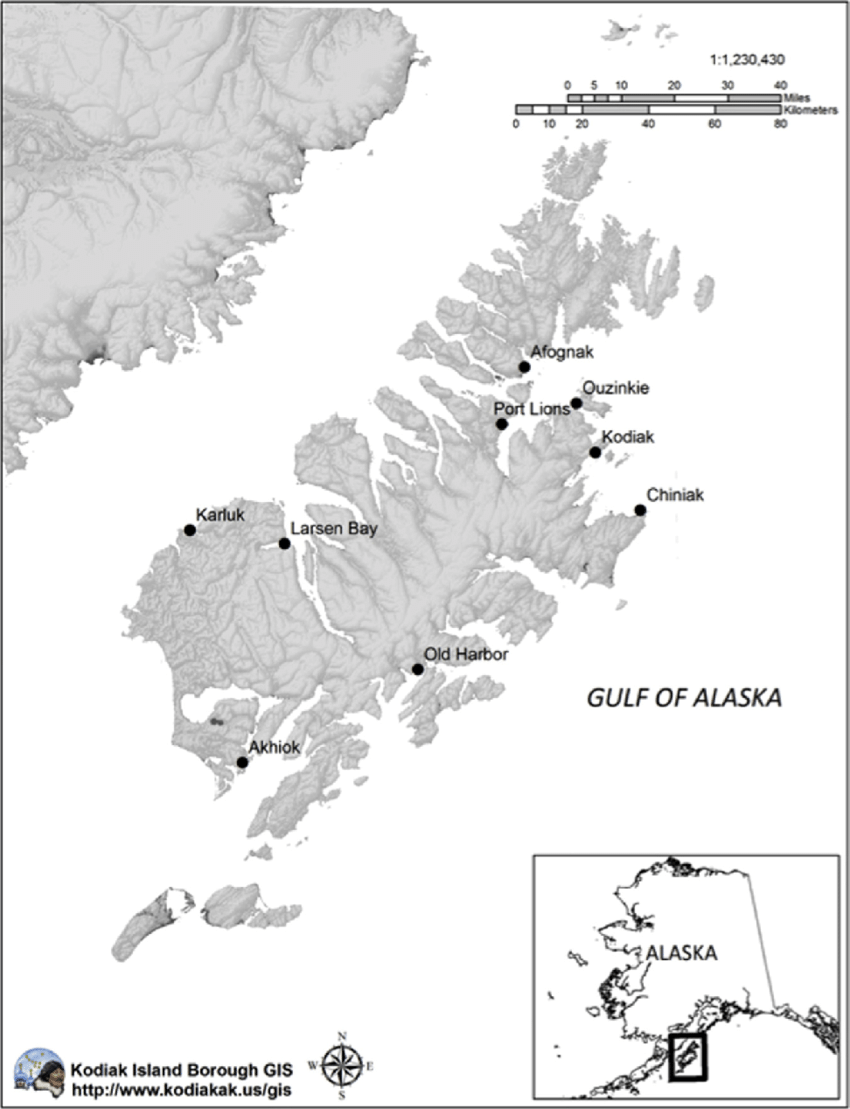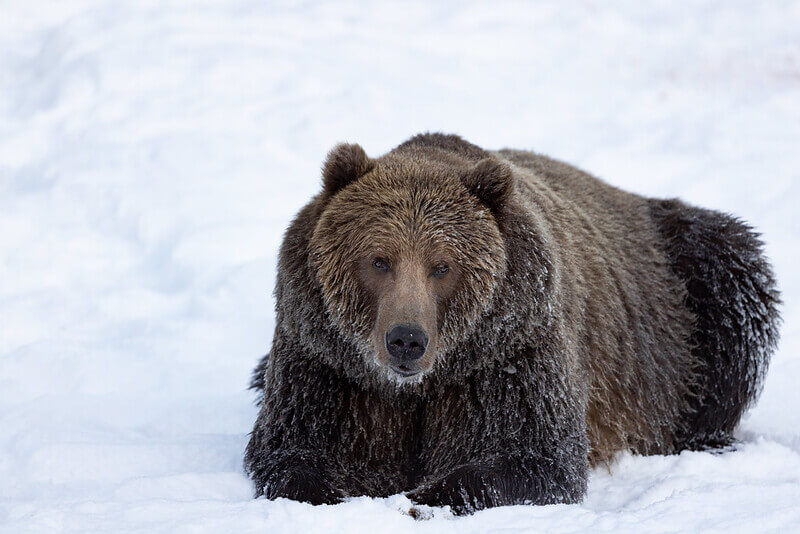About Kodiak
About Kodiak Island

Located in the Gulf of Alaska, Kodiak Island is the largest in the string of islands known as the Kodiak Island Archipelago. This island group stretches about 180 miles long and covers about 5,000 square miles. At 3,588 square miles, Kodiak is the second largest island in the United States (the island of Hawaii is the largest).
Kodiak History
Ten thousand years ago, glaciers covered most of the archipelago and chiseled the islands into jagged peaks, wide valleys and deep bays. Today, no point of land is further than 15 miles from the ocean.
The first people of Kodiak arrived more than 8,000 years ago. They traveled in skin boats along the Aleutian Chain, a string of islands that stretches from Russia to the Alaska mainland.
Russian fur hunters and traders, in pursuit of the prized sea otter that inhabited the North Pacific, established Kodiak as a commercial port in 1792 and the first capital of Russian America.
The Russian American Magazin, the oldest wooden building on the West Coast of North America, is located in the City of Kodiak. In 1808, Russian craftsmen employed by the Russian American Company used local spruce logs to build the large, two-story warehouse to store furs. The building still stands today in its original location on a hill overlooking the harbor in downtown Kodiak.
In 1912, Mount Novarupta erupted on the Alaska Peninsula and covered the town of Kodiak with several feet of ash.
During World War II, Kodiak grew from a small fishing village of 400 residents to a major staging area in the North Pacific when the U.S. Navy built a large base in Kodiak.
In 1964, the Great Alaska earthquake triggered a series of tsunamis that wiped out Kodiak’s boat harbor, waterfront, and central business district.
Population
- People: Approximately 13,500 people live throughout the Kodiak Island Archipelago. Kodiak, the major population center and home of Kodiak College, is on the northeast corner of Kodiak Island. People also live in remote communities, including six Alaska Native villages, throughout the archipelago: Ouzinkie, Port Lions, Larsen Bay, Karluk, Akhiok, and Old Harbor.
- Bears: Approximately 3,500 Kodiak brown bear live on Kodiak and other islands in the archipelago.
Weather
- Average summer temperature (July): 54 F
- Average winter temperature (January): 30 F
- Average rainfall: 68 inches
- Maximum daylight hours (June 21): 18 hours, 11 minutes
- Minimum daylight hours (December 21): 6 hours, 5 minutes

Kodiak Facts
- Approximately 90 percent of Kodiak Island is designated brown bear habitat – the Kodiak National Wildlife Refuge.
- The Kodiak brown bear and polar bear vie for ranking as the largest land-based predator on earth.
- Kodiak is natural habitat for the little brown bat, the smallest mammal in Alaska.
- Kodiak is the largest commercial fishing port in the state and one of the top three fishing ports in the country.
- Kodiak is home to the largest U.S. Coast Guard base in the world.
- All five species of wild Pacific salmon – chinook, sockeye, coho, humpback, and chum – return to spawn in one of the 800 salmon streams in the Kodiak Island Archipelago.
- One of the largest worldwide populations of Emperor Geese and Steller’s Eiders winter in Kodiak.
Island Links
- Kodiak Chamber of Commerce
- Kodiak Island Visitors Guide
- Kodiak Island Borough
- Alutiiq Museum
- Kodiak Community Resources Directory
- Kodiak Daily Mirror
- Kodiak History Museum
- Kodiak Maritime Museum
- Kodiak Military History Museum
- Kodiak National Wildlife Refuge
- Kodiak Public Radio (KMXT & KODK)
- Koniag, Inc.

